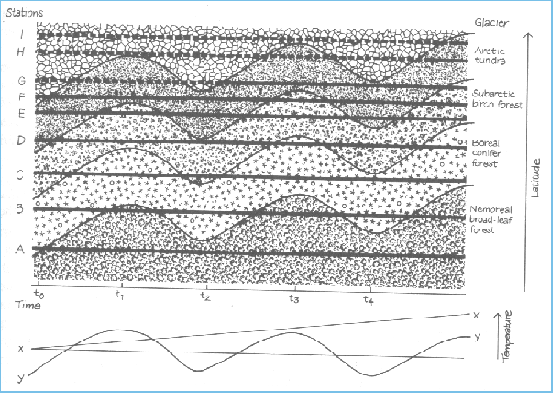A P P L I C A T I O N S
Paleoecology & Paleoclimate

Different registration of the same climatic events in a schematic transect from the centre of a glaciation (top) outwards. Heavy horizontal lines; stations at various distance from the glaciation centre. Shadings represent plant communities migrating towards or away from the glaciation centre with changes in climate.
Paleoecology is the field concerned with the reconstruction and understanding of past environments. Throughout the life of a lake, sediments are deposited and the pollen trapped in the different layers will represent the surrounding vegetation assemblage when the sediment was deposited. This pollen can be extracted from the sediment and analyzed. Pollen grains have a distinct pattern characteristic of each plant species; therefore palynologists can identify the grains and tell to what plant the pollen belongs. However, they can usually only classify the grains down to the genus level. This helps them know about the plant species present at the time. With modern analogues, they can then make inferences about the climate of the region at the time the pollen was deposited. So, based on the relative abundance of certain pollen grains in the succession of layers, palynologists can interpret the vegetation assemblage of an area. They can also make deterministic statements about the migration, altitude and latitude of plants communities of the past.
|
|
|